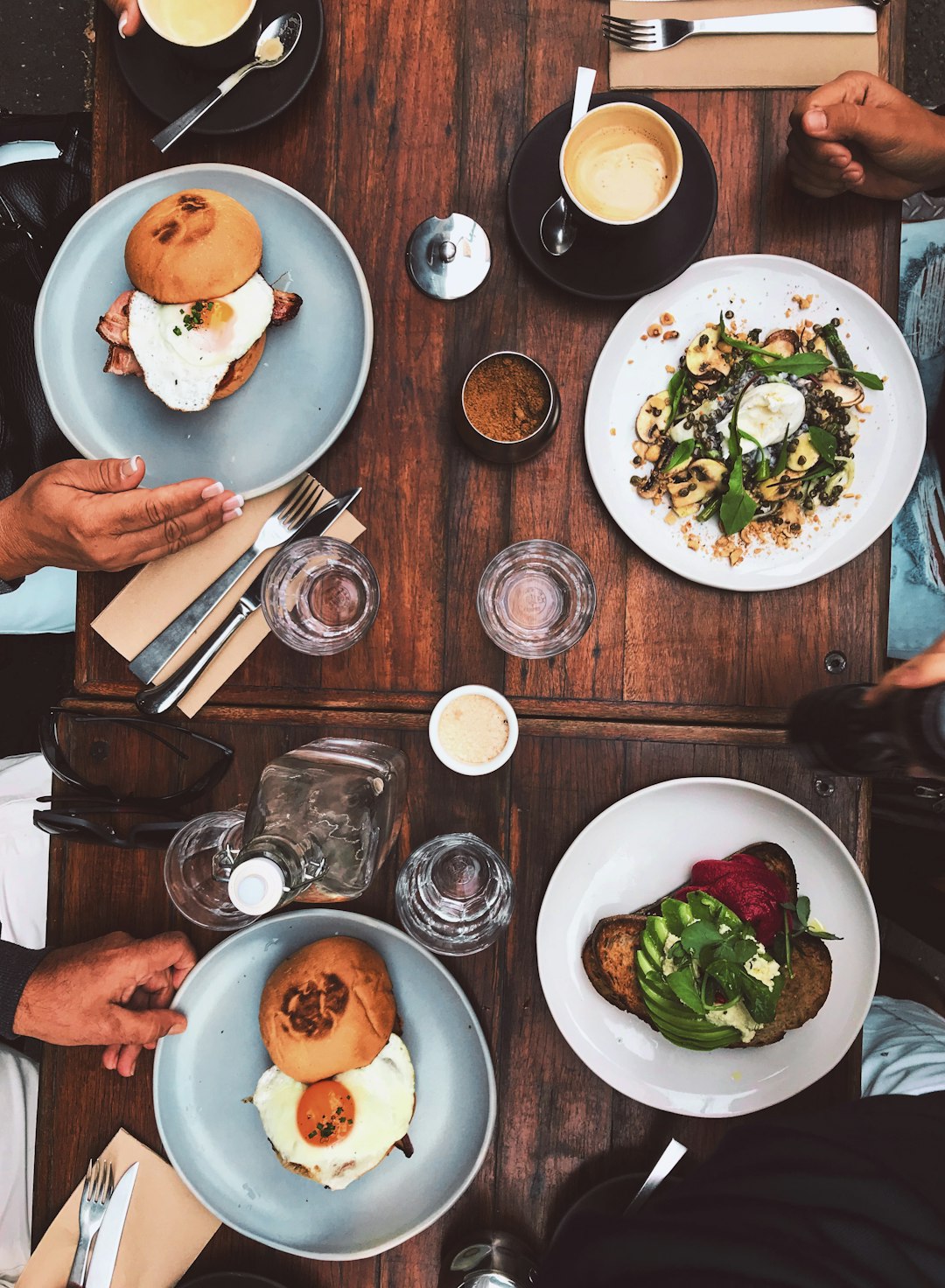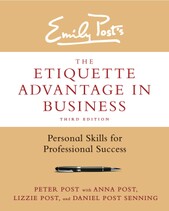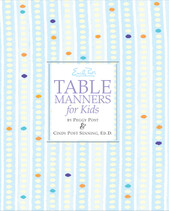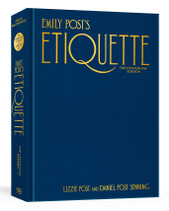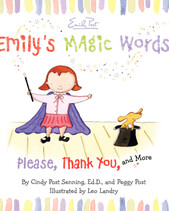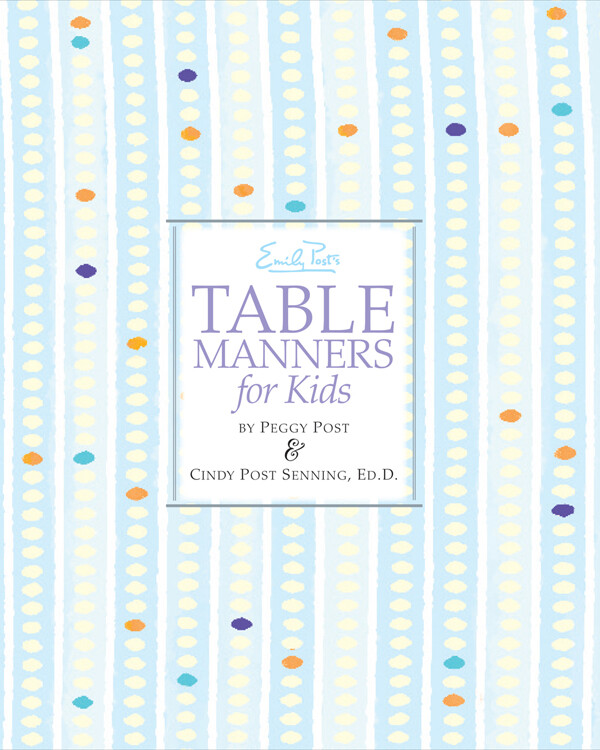
Download: Top Table Manners for Kids
Top Table Manners for Kids
Here are the top table manners kids (and parents) should know to feel confident in almost any dining situation.
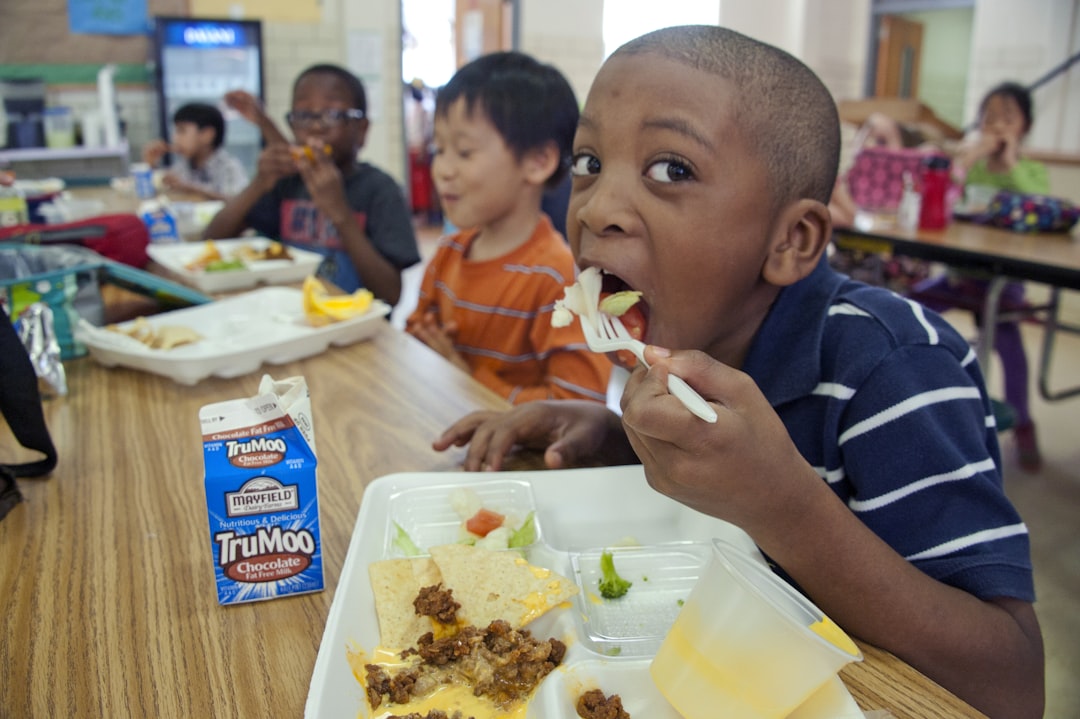
Far from being about perfection, table manners give kids the confidence and freedom to focus on the social aspects of eating together. By knowing what to do and how to use the elements we encounter at the table, kids can feel good talking about the food, their soccer game, or what they are excited about for an upcoming play date. Here are the table manners you and your kids can work on together to ensure mealtimes are positive experiences, both in your home and outside it.
Come to the table with clean hands and face.
While we eat, we try to avoid getting our hands and faces dirty with food smears and crumbs, but it’s also great to start the meal out with clean hands and a clean face. Other diners will be able to see you while you eat together, so making sure your face is clean is a great way to show up and represent yourself well. Chocolate on your cheek can undoubtedly be cute, but it’s also messy, and that’s something we try to avoid at the table. Clean hands also mean that we aren’t going to be spreading germs while selecting items from something like a communal bread basket.
Put your napkin on your lap.
Your napkin is provided so you can tend to any messes that might happen while eating. Starting out with it in your lap is like giving yourself the best safety net possible at the table. Place your napkin in your lap as soon as you sit down and are settled for the meal. If you need to get up during the meal, gently fold your napkin (so no stains are showing) and place it to the left of your place setting. This way, it doesn’t drop to the floor or get food stains on the chair. Once you return, put your napkin back in your lap.
Start eating when everyone else does—or when given the okay to start.
Look to your host for a signal of when to begin. If no one has indicated that you should start, wait until your host takes their seat and begins to eat; then you know it’s really okay! If someone has said, please begin while it’s hot. You may absolutely start eating, even if you’re the only one seated at the moment. What you want to avoid is sitting down (or receiving your serving) and starting in on your food right away with no invitation to do so.)
Stay seated, sit up straight, and keep your body off the table.
The meal is a bonding time for us. So, making sure that we are present and attentive is important. We demonstrate this by staying in our seats and by asking first if we may leave the table for a reason. You might say, “May I please be excused to use the restroom?” if you need the restroom, or “May I please help myself more?” to go get a second helping from the kitchen/sideboard. Keeping our posture upright shows that we pay attention to those around us. If we hunch over or use our hands to prop up our heads, we look like we don’t want to be at the table and participating. And we never put our feet up on the table; it’s not only unsanitary but it’s also considered very rude to show others the bottoms of your feet.
Chew with your mouth closed, and don’t talk until you’ve swallowed.
This one piece of advice will serve you very, very well throughout life if you adopt it. Do not open your mouth when there is food (and certainly not when there is a beverage) in it. Whether you want to talk, sing, shout, or just chew, your lips should remain closed when there is food or drink in your mouth, and no one should be able to see the food you are masticating.
Don’t make negative comments about the food.
If you don’t have anything nice to say, don’t say anything at all. This is really true when it comes to food others have prepared for us. It can feel unfamiliar to eat new foods or food that you know, but that has been prepared a different way from what you are accustomed to, but that’s okay. You just need to take a small portion and try it, and if it’s not your favorite thing, that’s okay. Just avoid saying you hate it or you really don’t like it. Instead, find something else to complement the meal. “Boy, what I am really enjoying are these rolls. They are so soft!”
Say “Please pass the…” instead of reaching.
The word please softens a demand into a request, which is much nicer when we eat together. Saying please is essential and helps to make the atmosphere during a meal friendly.
Chat with everyone at the table.
You don’t want to leave those sitting right near you out of the conversation. Make sure you spend time talking with the person on your right and left before the meal ends.
Don’t make rude noises like burping or slurping.
Burping and slurping and blowing bubbles can be fun, but when we are dining with others, these are things we don’t do at the table when others are present because these things are GROSS. And one of our biggest goals when it comes to etiquette is not to gross others out. Save these fun things for when you’re joking around with your friends, not when you’re eating with others, and definitely not if it’s a special occasion.
Ask to be excused when finished.
Because dining together is a shared experience, we don’t just walk away from the table when we feel like it. The expectation is that we sit until everyone has finished, and our host (usually our parent) says that the meal is completed and we may be excused. If adults talk long after dessert, it’s okay to ask, “Dad, may Kelson and I be excused to play Mario Kart?”
Thank your host or whoever prepared the meal.
It’s always important to say thank you for enjoying a meal together. “Thanks for dinner, Mom, it was great!” might melt your mother’s heart. Saying this to a friend’s parent who either took you out to eat at a restaurant or made a meal for you at their home (even if it was frozen pizza or takeout) will make you the kid who always gets invited back.
Offer to help clear the table.
As a guest, there is no rule that says you HAVE to offer, but boy, oh boy, it sure is appreciated when you do. “Mrs. Wilson, would you like help clearing or cleaning up?” might make Mrs. Wilson faint from gratitude.
For more kids and parenting advice, check out our Children’s Etiquette articles at emilypost.com.

LOVE IS IN THE AIR! A signed copy of Emily Post’s Etiquette - The Centennial Edition makes for a wonderful gift. Order your copy(ies) today from Bridgeside Books - our local, woman-owned business partner for all our signed books!
HELP KEEP EMILY POST AVAILABLE FOR YEARS TO COME! We’re working hard to keep Emily Post Etiquette going today, and our small team is always excited when our readers choose to support our efforts with a paid subscription to our substack. It comes with an ad-free version of the podcast, a weekly podcast bonus question and answer, and $50 to spend on digital products in our store.
Have you listened to this week’s podcast episode? If not, check it out here. And if you have your own question or salute for the podcast, you can submit it to [email protected].
Download: Table Manners Every Kid (and Parent) Should Know:
- Come to the table with clean hands and face.
- Put your napkin on your lap.
- Start eating when everyone else does—or when given the okay to start.
- Stay seated and sit up straight.
- Keep elbows (and other body parts!) off the table while eating.
- Chew with your mouth closed and don’t talk until you’ve swallowed.
- Don’t make bad comments about the food.
- Say “Please pass the…” instead of reaching.
- Chat with everyone at the table.
- Don’t make rude noises like burping or slurping.
- Ask to be excused when finished.
- Thank your host or whoever prepared the meal.
- Offer to help clear the table.
Free: Download these tips on a printable tip sheet!
Related Articles via Substack:
Etiquette Throwback: The Importance of Dinner Engagements - 1922For this Etiquette Throwback we take a look at the 1922 edition of Etiquette and Emily's advice on keeping dinner plans.Jan 19, 2023 • The Emily Post Institute

Etiquette Today: 10 Things Not To Do At The TableThese 10 actions are some of the best things to avoid at any meal.May 18, 2023
